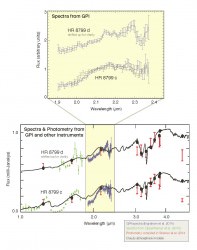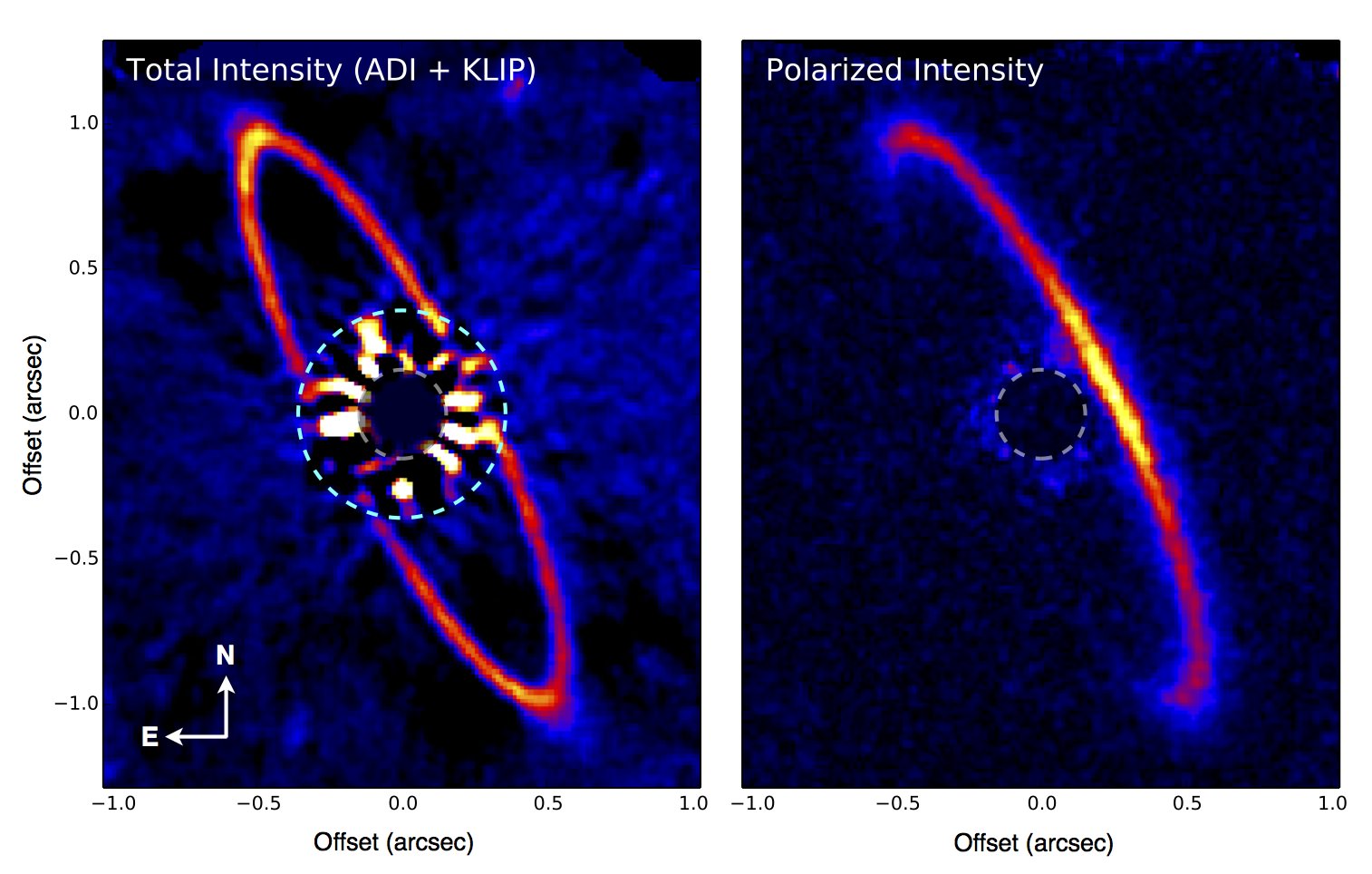This year marks the 20th anniversary of 51 Peg b, the first exoplanet detected around a Sun-like star. And although the number of sheer detections in the years since have been remarkable, it’s also remarkable how little we still know about these alien worlds, save for their distances from their host stars, their radii, and sometimes their masses.
But the ability to directly image these worlds provides the opportunity to change all that. “It’s the tip of the iceberg,” said Marshall Perrin from the Space Telescope Science Institute in a press conference at the American Astronomical Society’s meeting earlier today. “In the long run, we think that imaging offers perhaps the best path to characterizing rocky planets on Earth-like orbits.”
Perrin highlighted two intriguing results from the Gemini Planet Imager (GPI), an instrument designed not only to resolve the dim light of an exoplanet, but also analyze a planet’s atmospheric temperature and composition.
HR 8799
The first system observed with GPI was the well-known HR 8799 system, a large star orbited by four planets, located 130 light-years away. Previously, the Keck telescope had measured the atmosphere of one of the planets, HR 8799c, in six hours of observing time. But GPI matched that in only a half hour of telescope time and in less-than-ideal weather too. So the team quickly turned to the planet’s twin, HR 8799d.

“What we found really surprised us,” said Perrin. “These two planets have been known to have the same brightness and the same broadband colors. But looking at their spectra, they’re surprisingly different.”
Perrin and his colleagues think the likely culprit is clouds. It’s possible that one planet has a uniform cloud cover, whereas the other planet has a more patchy cloud cover, allowing astronomers to see deeper into the atmosphere. Perrin, however, cautions that this explanation is still under interpretation.
“The fact that GPI was able to extract new knowledge from these planets on the first commissioning run in such a short amount of time, and in conditions that it was not even designed to work, is a real testament to how revolutionary GPI will be to the field of exoplanets,” said GPI team member Patrick Ingraham from Stanford University in a news release.
HR 4796A
Perrin’s presentation also introduced never-seen details in the dusty ring around the young star HR 4796A. GPI also has the unique ability of detecting only polarized light, which sheds light on different physical properties.
Although the details are fairly technical, “the short version is that reconciling the patterns we see in polarized intensity and in total intensity has forced us to think of this not as a very diffuse disk but one that is actually dense enough to partially opaque,” said Perrin.
The disk may be roughly analogous to one of Saturn’s rings.
“GPI now is moving into an exciting phase of full operations,” said Perrin, concluding his talk. “We’ll be opening up a lot of new discoveries hopefully over the next few years. And in the long run taking these technologies and scaling them to future 30-meter telescopes, and perhaps large telescopes in space, to continue direct imaging and push down toward the Earth-like planet regime.”


For the curious, Pluto’s distance from the Sun varies from about 30 A.U. to 50 A.U. (distances from Earth to Sun). This disc around HR 4796A is at 79 A.U. from its star. The two dashed circles are at 11 A.U. and 25 A.U., which are close to the distances to Saturn (~10) and Pluto in our system – the Solar System 🙂 The relatively sudden discovery of planets outside our Solar System by Kepler, et al. and now the details such as this is not unlike turning the lights ON on one’s Christmas tree for the first time.
Just out of curiosity: if the Sun had a similar disk, how easily (or more likely not) could we see it from Earth?
In visible light, we probably would not see it but I suspect that disc is much more dense than our Kuiper Belt or Oort Cloud and would be a distinct band in our night sky in infrared light. I wonder how many of these distant bands are ‘age-related’, that is, found only in young stellar systems. We might have had a similar disc which was eventually disbanded by the giant gas planets.
Thanks Tim =)
Good stuff Shannon… Thanks for the link to the GPI page!